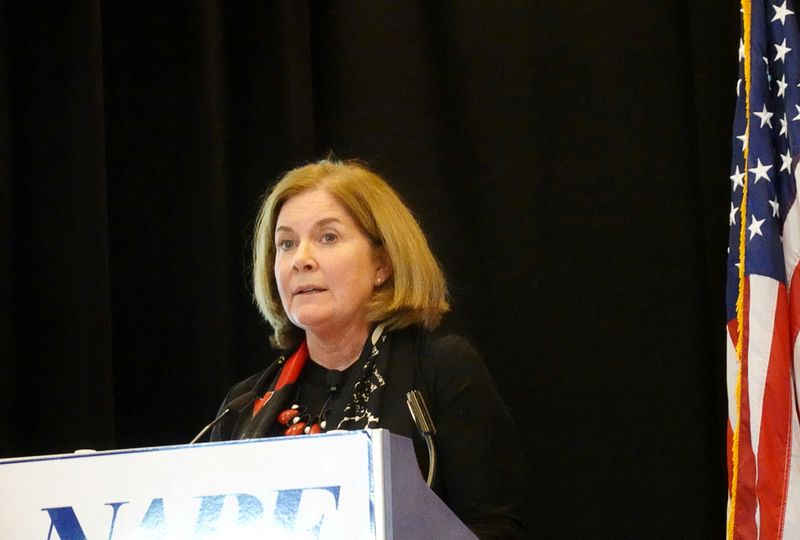(Reuters) – The Federal Reserve will face some hard choices and delicate communications challenges as it fights still-high inflation even as the labor market begins to soften, Kansas City Federal Reserve Bank President Esther George said on Friday.
“How much additional tightening will be needed to bring inflation back to 2 percent remains an essential aspect of the Federal Reserve’s deliberations,” George said in remarks prepared for delivery to an event at the Central Exchange, noting that while goods prices have started to decline, services prices continue to rise, bolstered by a tight labor market.
“Policymakers will undoubtedly face more complicated choices and difficult communications as the tradeoffs between inflation and employment become more apparent,” she said.
George leaves the Fed later this month under the central bank’s age-based retirement rules, after nearly 13 years at the helm of the Kansas City Fed.
For most of her tenure she was one of the central bank’s more hawkish policymakers. Last year, as the Fed ramped up the pace of its interest-rate hikes to fight decades-high inflation, she dissented to mark her discomfort with moving in large steps and her support for a more measured approach to policy tightening.
In December she and her colleagues downshifted to a slower rate-hike pace, delivering a half-point rate hike after four straight 75-basis point moves, and have signaled they may slow rate hikes further this year as inflation eases.
George did not use her prepared remarks to map out a preferred path for rate hikes, or to react to fresh data on the labor market published Friday showing some cooling in wage growth in December.
Instead she flagged ongoing concerns about inflation, subject she said to a potential renewed surge from energy and crop prices as Russia’s war in Ukraine continues, and vulnerable to household decisions over how freely to spend excess savings in the face of a slowing economy.
“The longer inflation remains above its 2 percent objective, the greater the chance that higher inflation becomes embedded in the expectations of workers, producers, and consumers,” she said, adding that ingrained inflation is very costly to combat. The Fed’s rate hikes last year demonstrated its inflation-fighting commitment, she said.
Still, she said, “uncertainty around the path of policy could rise once the public and markets start evaluating how the Federal Reserve is weighing inflation relative to a softening labor market in its policy decisions.”
(Reporting by Ann Saphir; Editing by Chizu Nomiyama)
